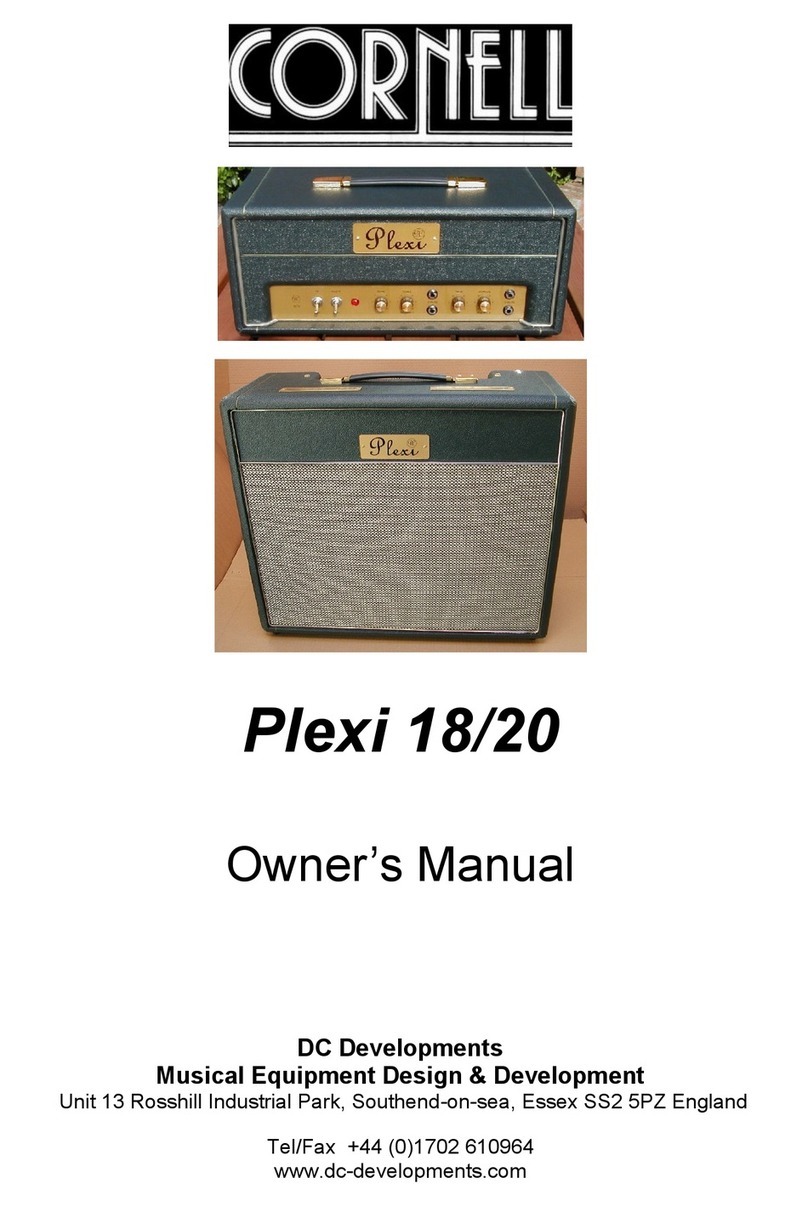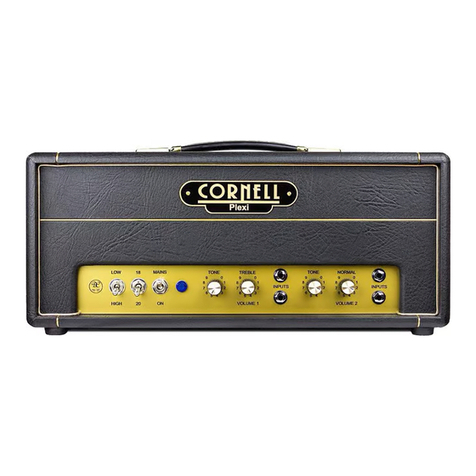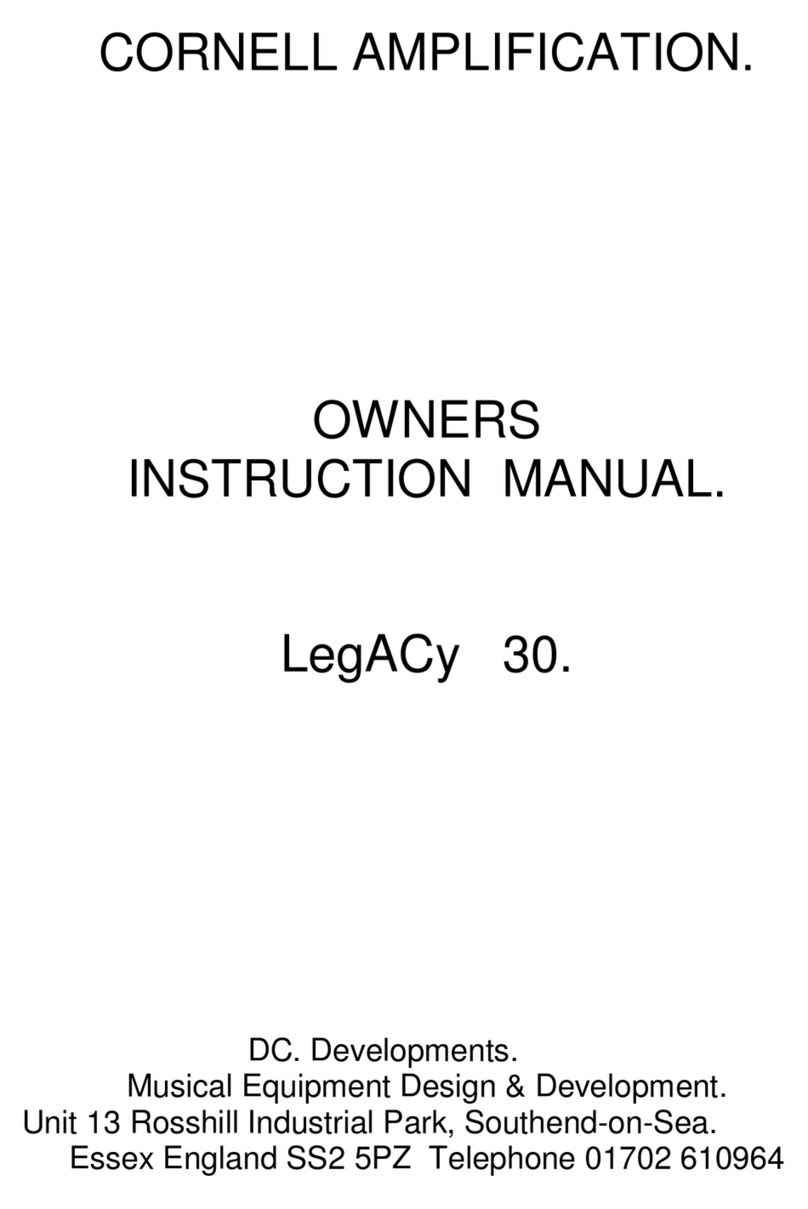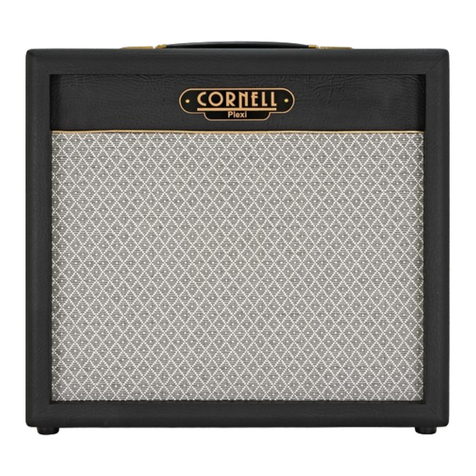Controls
1. Input - Hi & Lo
Both inputs offer high impedance connections for instruments.
The Hi input provides 6dB more gain than the Lo input.
2. Volume - Adjusts the overall volume of the amplifier.
3. Bass - Adjusts the amount of low frequency boost.
4. Treble - Adjusts the amount of high frequency boost.
5. Gain - Adjusts the gain/overdrive of channel 2.
6. Reverb - Adjusts the amount of reverb (works on both channels)
7. Master - Adjusts the overall volume of the amplifier.
8. Mains Indicator
When illuminated, this shows that the valve heaters are on, and that there is
power to the amplifier.
9. Standby
Connects power to the valves for operation, use Standby mode for breaks in
usage (eg, between performance sets).
10. Valve/Diode Switch - Selects the rectifier type.
11. Output Switch
The three-position output switch selects full power (position ‘A’), 1/5 power
(position ‘B’), and 1/15 power (position ‘C’) [these figures are approximate]
12. Impedance Switch
The switch at the rear of the chassis next to the external speaker jack is an
impedance switch. This switch should be pointing downward for normal use
(with 8 Ohms internal speakers only, or 8 Ohms external speakers with the
internal speakers disconnected); and should be switched to point upwards for
use when an 8 Ohms extension cabinet is used in parallel with the internal
speakers (or some other combination totalling 4 Ohms). Using the correct
impedance selection enables the amp to deliver maximum power to the
speakers.
13. Mains Fuse
The fuse holder, next to the mains switch on the back panel, contains the
mains fuse for the amplifier. The mains fuse protects the amplifier from
electrical faults.
Replace a failed fuse only with the same type and rating.
Do not operate the mains switch without a 30 second delay between
operations. There is an internal thermistor to reduce mains surges. This
protects the amp and helps to ensure a long life for the components. The
thermistor works by introducing a resistance in the circuit when the power is
switched on. Within a few seconds the thermistor heats up and its resistance
reduces, allowing the full current to flow into the mains transformer. After
switching off the amp, it takes a few seconds for the thermistor to cool down
and to return to its initial, protective resistance value.

































